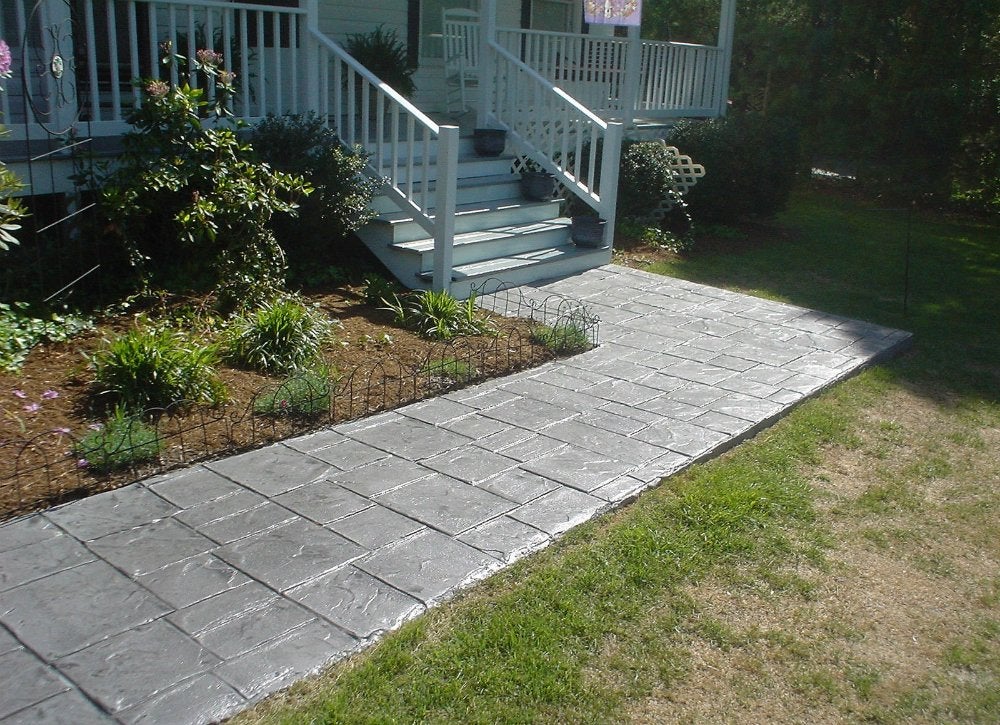

We may earn revenue from the products available on this page and participate in affiliate programs. Learn More ›
Home Advice You Can Trust
Tips, tricks & ideas for a better home and yard, delivered to your inbox daily.
By signing up you agree to our Terms of Service and Privacy Policy.
Casual Gravel

Zillow Digs home on Bainbridge Island, WA
Perhaps least expensive of all, gravel lends itself to easy DIY installation. That’s partly because the loose stones are permeable and present no drainage challenges. It’s low maintenance too; besides weeding, the gravel needs only to be topped up every year. Just be sure to include edging on both sides of the path to contain the stones. Note, too, that if your path needs to be cleared after snowfalls, gravel isn’t the best choice. Likewise, it’s unsuitable for steep slopes.
Step It Up

Custom concrete stepping stones make a perfect summer DIY project for kids, but this far-out design is all grown up! All you’ll need are standard concrete stepping stones, a rubber doily, and spray paint to transform an ordinary path into a rustic treasure—no concrete mixing required!
Pallet Path

A short rustic path might just be the next pallet DIY on your to-do list! Be sure to treat the planks first so they will last for years, withstanding the moisture and exposure to the elements that might otherwise lead to wood rot. Installation is as simple as digging a level pathway and laying each pallet loosely in place.
Salvaged Brick Beauties

Choosing to use recycled brick could instantly add a worn-in charm to your landscape and—depending on the deal you strike—save you money on your path’s construction. Check out your local salvage yards for used materials, and do a quick search as well for specialty dealers who carry reclaimed brick.
Manageable Mulch

flickr.com / via maiac
Known for its supporting role in well-kept garden beds, mulch also has star power all its own—as an inexpensive walkway material. Mulch is a natural weed blocker, so maintenance is relatively low: Simply add on more chips yearly, and edge the path with border plants or brick to keep everything tidy.
Customized Course

flickr.com / via Decorative Concrete of Virginia
Think concrete walkways are passé? Not so. Concrete forms in a multitude of shapes and styles can help you elevate ho-hum cement to new heights, like this walkway disguised as classic pavers. If you do decide to do it yourself, use a template to help plan and customize your path before you get to work!
Related: Cement Your Place in DIY History with These 9 Easy Concrete Projects
A Cut Above

To build a rustic outdoor space, nothing beats the look of real wood. Here, crosscut logs are placed side by side to create a walkable work of art. This thrifty DIY becomes even more affordable when you use storm-damaged tree branches. And the best part is that it couldn’t be easier to install. To create an even surface, place your wood slices on level ground, then fill in with dirt, sweeping between pieces to fill the gaps.
Related: 10 Things to Do with Cross-Cut Trees
Walk This Way

Choose a pathway that fits your style and needs. If none of these ideas perfectly suit you, put your own design stamp on it to make it what you want.

This Is the Year for a Kitchen Renovation
Whether you’re selling or staying, everyone can get something out of a kitchen update. Learn why we consider this renovation the Most Valuable Project of 2025 and how to stay on budget.